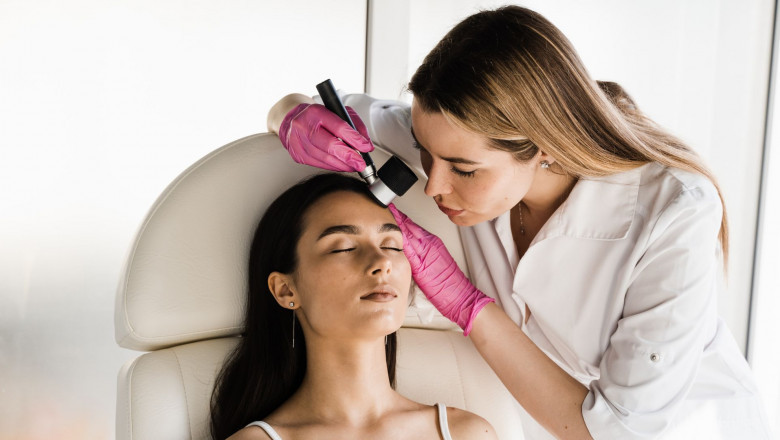views
Things You Should Know Before Your First Skin Screening
Skin Screenings Are Quick and Painless
One of the biggest concerns people have before their first skin screening is whether it will be uncomfortable or painful. The good news? A skin screening is completely painless and typically takes 10 to 20 minutes, depending on the number of moles or skin lesions that need examination.
-
Your dermatologist will use a dermatoscope, a special magnifying tool, to examine moles and other skin abnormalities up close.
-
They will visually inspect your skin from head to toe, including areas you might not think about, like your scalp, ears, underarms, fingernails, between your toes, and the soles of your feet.
-
If the doctor finds anything suspicious, they may take photos for future comparison or recommend a biopsy (a quick, minor procedure where a small sample of the skin is taken for further examination).
Most patients find the exam comfortable and non-invasive, making it a simple but crucial step in maintaining good skin health.
You Should Do a Self-Check Before the Appointment
While dermatologists are trained to spot unusual skin changes, you know your skin best. Before your appointment, take some time to perform a self-skin exam and look for anything unusual.
What you majorly need to look for are new or changing moles, sores that don’t heal, rough or scaly patches on the skin, sudden unusual lumps or growths, areas that are itchy, bleeding, or painful
You’ll Need to Remove Makeup, Nail Polish, and Jewelry
To ensure a thorough skin examination, it’s best to arrive at your appointment without makeup, nail polish, or heavy lotions. These can mask skin changes and prevent your dermatologist from getting a clear look at your skin. Makeup can hide suspicious spots or discoloration on the face, while there can be a cancer which may be developing under the patient’s nail, so removing any nail polish or color on the nails is essential to ensure accurate check. Jewellery like rings, bracelets, and watches can cover areas where skin cancer might develop, such as the wrists or fingers.
If you forget, your dermatologist may provide wipes to remove any makeup or lotion before the exam.
Full-Body Screenings Include Private Areas
Many people don’t realize that skin cancer can develop anywhere on the body, including areas that are rarely exposed to the sun, such as the scalp, underarms, breasts, buttocks, and genital area.
-
You’ll be provided with a gown to wear during the exam.
-
Your dermatologist will examine all areas quickly and professionally while ensuring you feel comfortable.
-
If you feel uncomfortable with any part of the screening, you can discuss it with your doctor beforehand.
Remember, your dermatologist is there to help you detect skin cancer as early as possible, so a full-body check is highly recommended.
Regular Screenings Are Essential for High-Risk Individuals
Not everyone needs a skin screening every year, but some people are at a higher risk for developing skin cancer and should schedule regular screenings. You may be at higher risk if you:
-
Have fair skin, light-colored eyes, or freckles (higher risk of sun damage).
-
Have a history of sunburns, especially severe ones during childhood.
-
Spend a lot of time in the sun or use tanning beds.
-
Have a family history of melanoma or other skin cancers.
-
Had skin cancer before.
-
Take medications that weaken your immune system.
Early Detection Saves Lives
One of the most important reasons to schedule a skin screening is that early detection of skin cancer significantly improves survival rates.
At last what needs to be understood is that skin cancer screening is not only for when you see potential signs of something wrong with your skin or body but it is more of a precaution and a way to detect anything wrong the earliest as possible in order to get it treated as soon as possible.






















Comments
0 comment